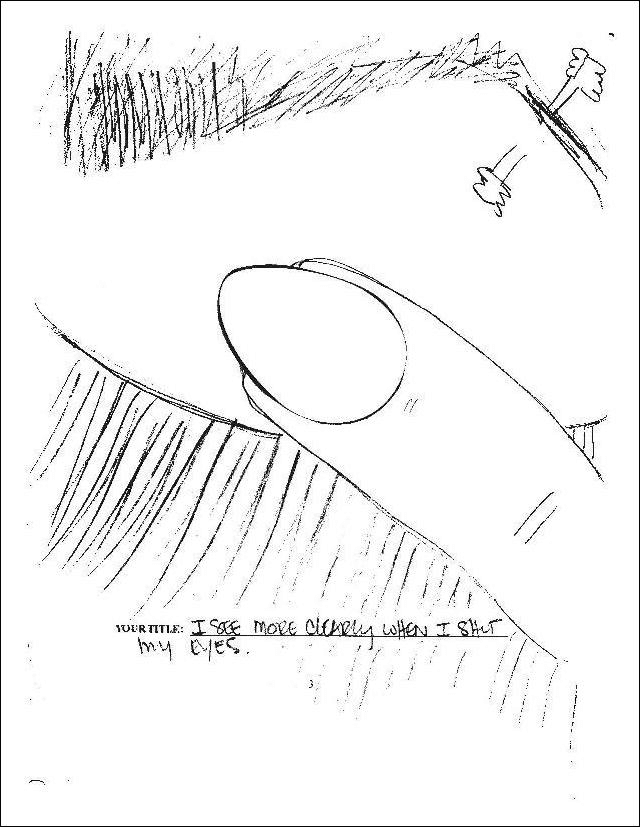Can creativity be measured with a score?
Kerrie Hillman created this drawing during a Torrance Test of Creative Thinking. (Photo courtesy of Scholastic Testing Service, Inc.)
The man nicknamed “the father of creativity” was psychologist E. Paul Torrance.
In the 1940s he began researching creativity in order to improve American education. In order to encourage creativity, we needed to define it — to measure and analyze it, he said.
If intelligence is measured with an IQ score, why can’t creativity be measured with some score as well?
But there’s a problem, says James Borland, a professor of education at Columbia University’s Teachers College.
“I’m not sure I have a definition of creativity,” he said. “It’s one of those human constructions that isn’t discovered but invented … It’s a word we use in everyday speech and it makes perfect sense, but when you start to study it and try to separate out its constituent parts, it becomes more and more and more confusing.”
Torrance drew on contemporary research that related creativity to divergent thinking — the characteristic of coming up with more answers, or more original answers, rather than deriving a single best answer.
That divergent-thinking trait might exhibit itself in different situations, so that, in Torrance’s view, the creativity shown by an artist was not different in type than the creativity shown by a scientist, a teacher or a parent.
But Borland says if no one agrees on what creativity is, it’s virtually impossible to measure it.
That didn’t stop Torrance though.
The Torrance Tests of Creative Thinking were the work of his lifetime. They are still widely used to assess students and job applicants, and have been translated into more than 50 languages.
